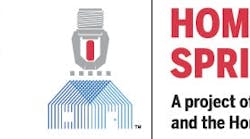As stated in a previous article, the on scene firefighter is an extension of the fire investigator. If you are not fortunate to have an investigator and leave the scene unprotected in order to put yourself back in service, the investigator responds into a job that may be compromised by the owner or on lookers.
Regardless of the two above scenarios, an investigation into the origin and cause of the fire must take place. What really happens after you go back to the station? I will attempt to give you a general overview. Upon arriving on the scene the investigator will probably walk around the exterior of the fire building. Why do that? After all, its obvious the fire occurred in the front room. A large volume of information can be gathered by observing all four sides and surrounding exposures. Do the exposures have fire damage? Are windows forced out or in? Are doors forced?
What is in the garbage pails besides garbage? Is there a hole cut in the roof or did it burn through? Is there exterior smoke or fire damage visible? How did the hose lines enter the building. Did they go by way of the ventilation holes? Are there familiar people in the crowd watching this fire that you have seen at other jobs? Is there power to the structure?
The walk around might only take a few minutes, but the information gathered may prove to be helpful as you enter the fire building. Maybe nothing appeared to be out of the ordinary. Thats helpful too. Now you can take that information and go inside having a mental picture of the exterior.
Upon entering, the investigator can observe areas more damaged than others. In simplified terms the least to the most should put you in the room or area of origin.
The scene should be photographed. If you are fortunate to have a police officer assigned, he or she can learn from you and you in turn can learn from them. Even though you are doing an investigation in a fire building, laws must be followed and proper procedures adhered to in order to keep the investigation legal. The police officer is a great tool to ensure that proper evidence is collected and victims rights are protected.
For many years my department had the luxury of having a police officer working out of the fire investigation office. What a positive atmosphere for learning. The police taught us legal procedures and we taught them fire scene investigation. A direct link was always present to the prosecutors office if needed. Someone once said that a picture is worth a thousand words. My comment to you is, when in doubt, photograph it. In my opinion, you can never take too many photos. All four sides and interior path of fire is preserved by photography.
A log is kept of each shot indicating in what direction the shot is looking and of what. It can be hard to remember all shots after you get photos back. Many will look similar. In many cases, the log is done while at the scene.
Evidence may need to be gathered. Again proper photos must take place of the items in question before they are removed. Showing the evidence in place helps to build the foundation of your fire scene. A log should be kept of each piece of evidence removed. The same form can be used with a different title. Removed evidence will be secured in a proper area for possible future reference.
Working the fire scene is not a glamorous job. After a few days, the food has rotted, the water saturated plaster, sheet rock and burnt material has turned into a heavy pile of debris that must be removed.
Add freezing temperatures and the debris becomes even harder to remove. In our office we had a sign that stated, "THE ANSWERS ARE ON THE FLOOR". That means, the investigator might be spending hours shovelling debris to see what the floor looks like in the room of origin and possiblty beyond. Keeping this article in general terms, the investigator is very interested in what he or she sees or does not see on the floor. Debris removal is not easy and sometimes back breaking. The results can push the investigation into a totally different direction.
Finally, if there are neighbors or owners that can provide verbal or written statements, then that inforimation needs to be incorporated into the report. A pocket tape recorder saves alot of writing while at the scene.
If the investigation team is just one person, his or her job can take many hours. So..... while you are back repacking your hose beds and getting ready for the next run, a fire investigator is working the scene attempting to solve a mystery that most likely has created a major disruption in the lives of many people.
In conclusion, sprinklers and smoke detectors have reduced the volume of fire in America considerably. It is the fire departments mission and responsibility to protect the public wherever they might be. It is the investigators mission to determine a proper cause with hopes that some day through a properly educated public, families may be spared the toll that fire takes upon our lives.
Related:





